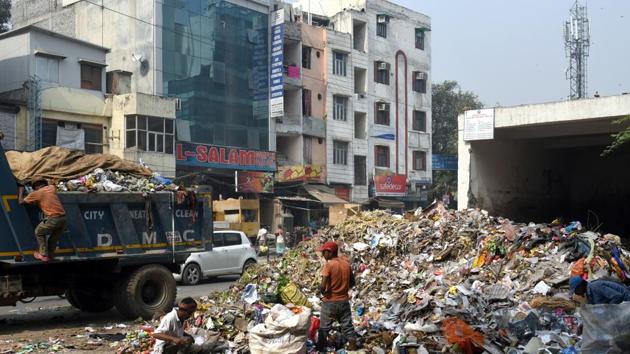Upscale societies generate twice the waste than working-class ones, reveals EDMC’s study
The study also found that the average garbage generated by every person in east Delhi has increased by around 20% in the last 14 years.
The residents of upscale neighbourhoods in east Delhi discard nearly double the trash than their counterparts in working-class colonies, according to a new survey conducted by the East Delhi Municipal Corporation (EDMC) in two neighbourhoods.

The study also found that the average garbage generated by every person in east Delhi has increased by around 20% in the last 14 years.
The study, conducted last week in Rajvir Nagar (an unauthorised colony) and Pocket IV, Mayur Vihar-I (a planned neighbourhood), was commissioned on the directions of National Green Tribunal in order to collect latest garbage generation trends by people living under varied living standards.
The study also sought to determine an estimated composition of waste generated across Delhi.
“The results of report will help us to make appropriate waste management plans,” said an EDMC official.
The South and North Corporations have yet to complete the survey in their respective areas.
The EDMC had selected Rajvir Nagar, a working-class neighbourhood, and a relatively affluent Pocket IV, Mayur Vihar-I for the study. As many as 200 homes and shops were selected for the sample survey in each of the two neighbourhoods. The municipal staff took out samples from the collected waste for a week and engaged a research agency to segregate the waste components in five categories such as ‘recyclable’, ‘organic waste’, ‘combustible’, ‘inert’ and ‘others’.
Affluent neighbourhoods generate more waste
The survey showed that the per-person waste generation in the city has increased from 500 gm per day in 2004, to 600 gm per day in 2018.
“In the same time, the population of east Delhi increased from 30 lakh to 44 lakh. So when we were generating 1,000 tonnes of waste in east Delhi in 2004, we are generating 2,700 tonnes each day now,” said Pradeep Khandelwal, chief engineer, EDMC.
The survey also revealed that the per-capita waste generation in Mayur Vihar was 393 grams per day, almost the double of what is generated in Rajvir Nagar (197 grams per day).
“The generation of waste depends on the income status,” said Khandelwal.
Rise in organic waste
In 2004, the total waste collected from households in east Delhi had 50% organic component while now, the survey showed, it has gone up to 66% in 2018.
Swati Sambyal, programme manager with Centre for Science and Environment, said, “We have been saying all along that the garbage generated in cities has more organic component so civic authorities should shift from the waste-to-energy plant approach to building more composting units.”
“Garbage can be managed easily by developing more decentralised waste processing units at dhalos (community dumping spaces),” she said.
Inert generation
The report shows that amount of ‘inert’ generated in unauthorised colonies in east Delhi is double of what a resident in a planned neighbourhood would discard. The ‘inert’ is the waste that can’t be used for any purpose even after treatment.
“It usually includes sweeping dust, silt, ash and fine pieces of broken glass. In unauthorised colonies, houses or roads are not constructed properly that’s why generation of inert is high,” an EDMC official said. The EDMC found that 7.76% of the total waste generated in the working-class neighbourhood of Rajvir Nagar comprised inerts. In Mayur Vihar, it was 1.84%.
Recyclables
The study found that recyclables such as plastic bottles, paper, glass, discarded was almost the same in Rajvir Nagar (1.77%) and Mayur Vihar (1.80%). “It is hard to believe because people living in affluent neighbourhoods buy more plastic, glass and other recyclable products. But if the study figures are accurate, then it must be due to the culture of selling most of the recyclables to scrap dealers,” said Satish Sinha, associate director of Toxics Link.
Non-recyclables
Of the total waste generated by a Mayur Vihar resident, 28.31% was packaging discards comprising foils, cartons and multi-layered wrappers and food packets. In Rajvir Colony, this component of waste was 23.29%.
This garbage, the officials said, was not fit to go to recycling plants but was good material to be incinerated in waste-to-energy plants.3
Stay updated with all top Cities including, Bengaluru, Delhi, Mumbai and more across India. Stay informed on the latest happenings in World News along with Delhi Election 2025 and Delhi Election Result 2025 Live, New Delhi Election Result Live, Kalkaji Election Result Live at Hindustan Times.
Stay updated with all top Cities including, Bengaluru, Delhi, Mumbai and more across India. Stay informed on the latest happenings in World News along with Delhi Election 2025 and Delhi Election Result 2025 Live, New Delhi Election Result Live, Kalkaji Election Result Live at Hindustan Times.





